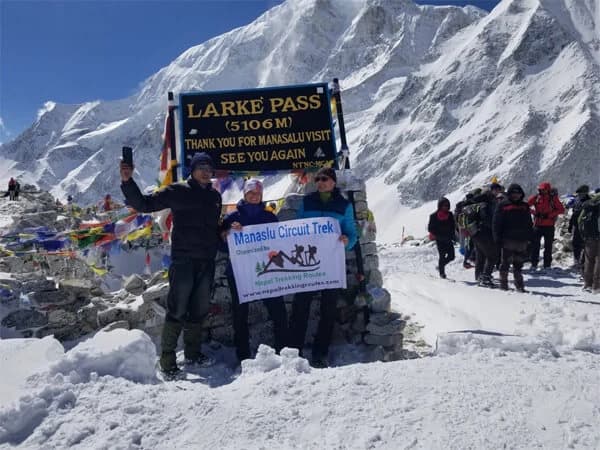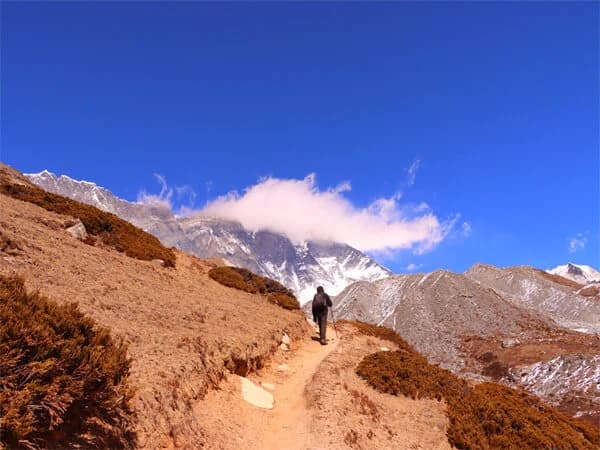Kanchenjunga Base Camp Trek Overview
Kanchenjunga base camp trek takes you around the world’s third peak Mount Kanchenjunga(8,586 m). Pronounced “Kang-chen-zod-nga” and meaning Five Treasures of Snow, Kanchenjunga Massif is a system of seven different summits.
To date, only a handful of national and international trekkers have visited this region. Lack of enough publicity is the first and foremost reason behind it. The location of this trekking region is another cause for the fewer visits to this geographic belt.
It is away from the limits of regular routes such as the Everest Base Camp Trek and the Annapurna Base Camp Trek. It gives you an explore the beauty of eastern Nepal! The prizes are its snow-capped peaks, lush valleys, beautiful rivers, and diverse landscapes.
It is a challenging task as the trails are not in proper condition. People started Nepal trekking,Peak climbing & expeditions in the second half of the twentieth century. However, the Nepal government officially permitted foreign trekkers to climb this peak in 1988.
Kanchenjunga Region Trekking is situated as the starting point of the Great Himalayan Trail (1,700 km). This trek rewards the trekkers with the distinct biodiversity and culture of Eastern Nepal. You will also enjoy the breathtaking view of the Great Himalayas of the region.
Kanchenjunga Conservation Area Project (KCAP) has been established to protect the endangered species of flora and fauna. While walking along the less crowded trails, you might encounter animals like blue sheep, musk deer, and mountain bears.
This region has been highly populated by the Kirant people (Rai and Limbu) since time immemorial. Kanchenjunga Base Camp trek facilitates you to have first-hand information about their lifestyle, culture, and tradition. You can also experience the hospitality of the Limbu people who are said to have the most hospitable ethnic communities in the SAARC region.
Some of the Major Highlights of Kanchanjunga Trek
- One of the best remote treks in Nepal
- Limbu and Sherpa villages of eastern Nepal
- Flora and fauna of Kanchenjunga Conservation Area Project
- Reaching the base camp of the world’s third-highest peak, Mt. Kanchenjunga (8,586m)
- Less crowded trails move along the lush forests and Himalayan valleys
- Breathtaking view of Mt. Kanchenjunga (8,586m), Table Shikhar, Gimmigela Chuli, Pyramid Peak and Kirant Chuli
- Crossing Selele La Pass (4,480m), Mirgin La Pass (4,663m), Sinion La (4,660m), etc.
Kanchenjunga Base Camp
The Kanchenjunga Base Camp Trek is a remote and wonderful journey in eastern Nepal. You will reach the base of the 3rd highest mountain in the world, Mount Kanchenjunga. Trekkers who want to explore the remote trails and amazing scenery can consider this trek. You will travel through high alpine terrain, forests, rivers, and traditional villages. Numerous snow-capped peaks, including the Janu, Kabru, and Kanchenjunga peaks, will be seen. You will encounter friendly locals with their unique language, culture, and customs. There are two variants of Kanchenjunga Base Camp. They are the North Base Camp and the South Base Camp.
Kanchenjunga South Base Camp
The southern side of Mount Kanchenjunga is the South Base Camp. It is also known as Yalung Base Camp. It provides breathtaking views of the south face of Kanchenjunga and the Yalung Glacier and is more tranquil than the north side. If you enjoy experiencing local culture, quiet trails, and dense forests, this trek is ideal for you.
Starting at Taplejung, the trek goes through traditional Limbu and Rai villages, including Tortong, Yamphudin, and Khebang. The landscape changes from green hills and farms to rocky ridges and alpine meadows as you ascend higher. You will experience warm hospitality and local cuisine while staying in teahouses or homestays. South Base Camp (Yalung Base Camp), 4,610 m, is the highest point of the trek.
From there, you can view the huge south wall of Kanchenjunga as well as neighboring peaks like Kabru and Rathong. It is a great choice for trekkers seeking a cultural and scenic experience without completing the entire circuit. It takes around 14-16 days to complete the South Base Camp Trek. This journey is made easier and enjoyable with the help of local guides and our company, Nepal Trekking Routes.
Kanchenjunga North Base Camp
The north side of Mount Kanchenjunga that ends at Pangpema is known as North Base Camp. It is the main viewpoint of the north face of Kanchenjunga. The vistas are wonderful, but the trek is difficult due to higher elevations. You will get a close-up look at glaciers, deep valleys, and tall mountains.
The trail begins in Taplejung, passes through the beautiful Sherpa villages of Ghunsa. It continues through Lhonak to Pangpema at around 5,143m. You will go through steep terrain, river gorges, yak pastures, and dense pine forests. Pangpema offers stunning views of Tent Peak, Wedge Peak, and Mount Kanchenjunga. The trail is less crowded and more isolated than other treks in Nepal. You must be in good physical condition and prepared for basic accommodations, simple meals, and changing weather. It takes 16-18 days to complete the journey.
A special permit and a certified guide are necessary because it is located in a restricted zone. Your comfort and safety are guaranteed when you trek with our company. It offers a remarkable experience for seasoned trekkers who enjoy mountain adventures.
Kanchenjunga Base Camp Trek 19 Days Itinerary
Are you looking for the best trekking itinerary for the Kanchenjunga Base Camp? The trek typically spans 19-24 days. There are different variations of Kanchenjunga Trek. However, Nepal Trekking Routes offers a Kanchenjuga base camp trek 19 days itinerary for an immersive experience in Nepal’s remote eastern Himalayas. Acclimatization days are built into the itinerary to ensure safety.
Trekkers can visit one or both base camps, North Base Camp and South Base Camp for unparalleled views of Kanchenjunga and its neighboring peaks. The itinerary can be tailored according to your interests. If you want a shorter or a longer version of this trek, then please contact us for customization. Despite the duration of itinerary, the trek combines cultural encounters with local ethnic groups and diverse landscapes.
How much does it cost for 19 days Kanchenjunga Base Camp Trek?
The Kanchenjunga Base Camp Trek cost for 19 days is base on the varies factors such as group size, trek duration, and services included. The Kanchenjunga trek is expensive than Annapurna Base Camp trek cost due to remoteness and restricted status. Kanchenjunga’s duration is nearly as twice as long as Annapurna Base Camp which increases cumulative costs. According to Nepal Trekking Routes, the trek can cost $1,950 per person for 19 days. It covers permits, transportation, guides, meals, and accommodations. Here is a detailed breakdown:
Kanchenjunga base camp Trekking Permits and Cost
As a restricted area, the Kanchenjunga region trek requires specific permits:
- Kanchenjunga Restricted Area Permit: $20 per week per person.
- Kanchenjunga Conservation Area Permit: $30 per person.
Kanchenjunga trek Guides and Porters cost
Hiring a licensed guide is mandatory for this restricted trek. Their expertise is essential for ensuring safety and navigation in this remote, off-the-beaten-path region.
- Guide Cost: $25-$30 per day
- Porter Cost: $20-$25 per day
What are the Transportation cost for Kanchenjunga trek?
Transportation costs for Kanchenjunga Base Camp trek depend on your chosen route to the trailhead. Most trekkers begin at Bhadrapur or Suketar, requiring either a flight or a long drive.
- Flights (Kathmandu-Bhadrapur): $200-$250 round trip
- Jeep rides: $200-$300 for transportation to and from trailheads
- Public Buses: Budget-friendly but slower
Private transport offers convenience, while public buses are more affordable but less comfortable.
Kanchenjunga Base Camp Trek Accommodation and Meals
Basic teahouses or homestays are available in the Kanchenjunga Base Camp route.
Daily food and lodging costs average $25-$35.
Miscellaneous Costs for Kanchenjuga Trekking
Additional expenses like snacks, beverages, or bottled water cost $10 per day. It is customary to give tips to guides and porters which costs around $100.
While more expensive than standard treks, the Kanchenjunga Base Camp Trek is worth the investment.
The Prominent Peaks and High Passes of Kanchenjunga Base Camp Trek
Despite its remoteness, the Kanchenjunga Base Camp trek shows you more than 20 snow-capped peaks. You see the mountains of Nepal as well as Sikkim, India during this trek. The mountains are above 6,000 m including three eight-thousanders of the Great Himalayas.
Mt. Everest (8,848.86 m), Mt. Makalu (8,485 m), and Mt. Kanchenjunga (8,586 m) are seen on this trip. Other notable peaks are Gimmigelachuli (7,350 m), Pyramid Peak (7,123 m), Mt. Kumbhakarna (7,710 m), and many more.
Apart from the snowy peaks, you come to see a few Himalayan glaciers while moving to and fro. Some of the most recognized are the Kanchenjunga Glacier, the Lhonak Glacier, and the Kumbhakarna Glacier. These glaciers give birth to some of the biggest rivers of Nepal.
There are a few notable Himalayan passes all above 3,900 m en route to the Kanchenjunga North Base Camp trek. Some of them are Selele Pass (4,480 m), Tamo La (3,900 m), Sinion La (4,660 m), Mirgin La (4,663 m) and Sinelepche La (4,724 m).
Most of the trails to the Kanchenjunga South Base Camp trek also contain in this trekking route. The trail to the south base camp (4,610 m) of Mt. Kanchenjunga diverts from Ghunsa to Yalung. For this, you have to go across Lapsang La Pass (5,160 m).
As it is not always easy to cross a high pass above 5,000 m, most of the trekkers choose to trek to the Kanchenjunga North Base Camp trek instead of the South Base Camp. If you want, you can also avoid all the passes mentioned above as well.
How to Begin Kanchenjunga Base Camp Trek from Kathmandu?
To begin the Kanchenjunga Base Camp trekking, you must reach Suketar of Taplejung. For this, you can take a flight from Kathmandu to Suketar directly for 40 minutes. You can also fly to Bhadrapur and Jhapa and drive to Suketar.
The roadway transportation from Kathmandu to Suketar doesn’t seem a good alternative. The roadway distance is 670 kilometers between the two cities. As the road condition is not proper, it becomes a tedious journey to start this trek.
The ecological regions make you realize the geographical and biodiversity of this route. While traveling for about three weeks, the trail passes through amazing landscapes and terrains to take you to Kanchenjunga North Base Camp.
Although the Nepal trekking trails are less frequented and in poor condition, the entire trip is a lifelong memory. The walking along the rhododendron, pine, and oak forests gives you a glimpse of various animals and birds.
This trek leads you along the villages of the Kirant people of eastern Nepal. The Kirant people are well-known for their unique hospitality. While doing this remote trek in Nepal, you will also taste their cuisines served at the best hospitality.
The different passes and snow-capped peaks en route are the other attractions that make this trip more memorable. After enjoying the mountain ranges of eastern Nepal from 5,143 m, you trek down towards the beginning point.
After exploration of this region, you will trek back to Taplejung and fly back to Kathmandu. If you want to reach the south base camp, you can customize the Kanchenjunga Base Camp trek. Trekking to the south base camp of Mt. Kanchenjunga is a chance to visit the mighty Yalung Glacier.
Some Important Variants of Kanchenjunga Base Camp Trek
Kanchanjanga Base Camp trek is a formidable trek into the grandeur of an eight-thousander of Nepal. Nepal Trekking Routes has designed the Kanchenjunga Base Camp trek itinerary for 23 days. This itinerary is enough to have the wonders of this region with enough rest during the journey.
The best time for Kanchanjanga Base Camp Trek is from spring to mid-summer and in autumn. Kanchenjunga Selele Pass Trekking, Kanchenjunga Base Camp trekkingBokta Peak Climbing and Kanchenjunga Milke Danda Trekking are some variants of Kanchenjunga region trekking.
More than this, you can also connect this trek to the Makalu region as well. The Makalu Kanchenjunga trek is another popular trek in Nepal. The Nepal Trekking package takes you to the base camps of both the 8,000 m above mountains.
If your time, budget as well as physical and psychological aspects fit, you can also do the Great Himalayan Trail trekking. It takes around 150 days to cover the route from far eastern to far western Nepal. To know more about cost and itinerary, contact us via email, phone call, WhatsApp, or online booking tools.
Food and Accommodation During the Kanchenjunga Base Camp Trek
Before the development of teahouses, Kanchenjunga Base Camp Trek used to be a complete camping trek in Nepal. But nowadays, teahouses are established and run in all the stopovers en route.
The teahouses provide basic facilities of food and accommodation for the trekkers. Due to its remoteness, you must forget about the luxury trekking services. The people cannot transport the goods and services easily to their place due to the lack of transportation infrastructure.
In the lower altitude, the number of teahouses are in considerable number. You can have a choice of booking the one with the best quality. However, the higher you go, the less number of teahouses you find!
Even the cost of food and accommodation services is low at the lower altitude stops. Just the opposite, in the higher places, you have to pay a bit higher prices. But, one thing is sure, you get organic and hygienic food.
Avoid eating non-veg items unless you find fresh items instantly. It may affect your health condition as they may be stored for a longer time. Have enough water and take sound sleep to avoid Acute Mountain Sickness (AMS) as well.

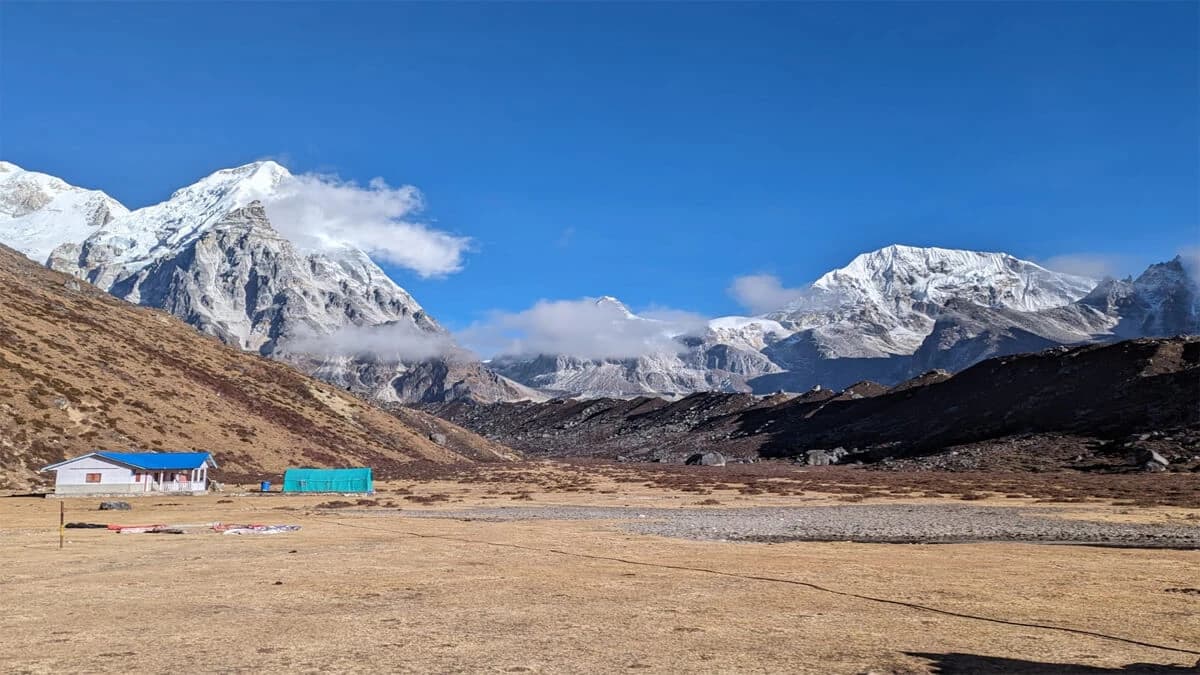
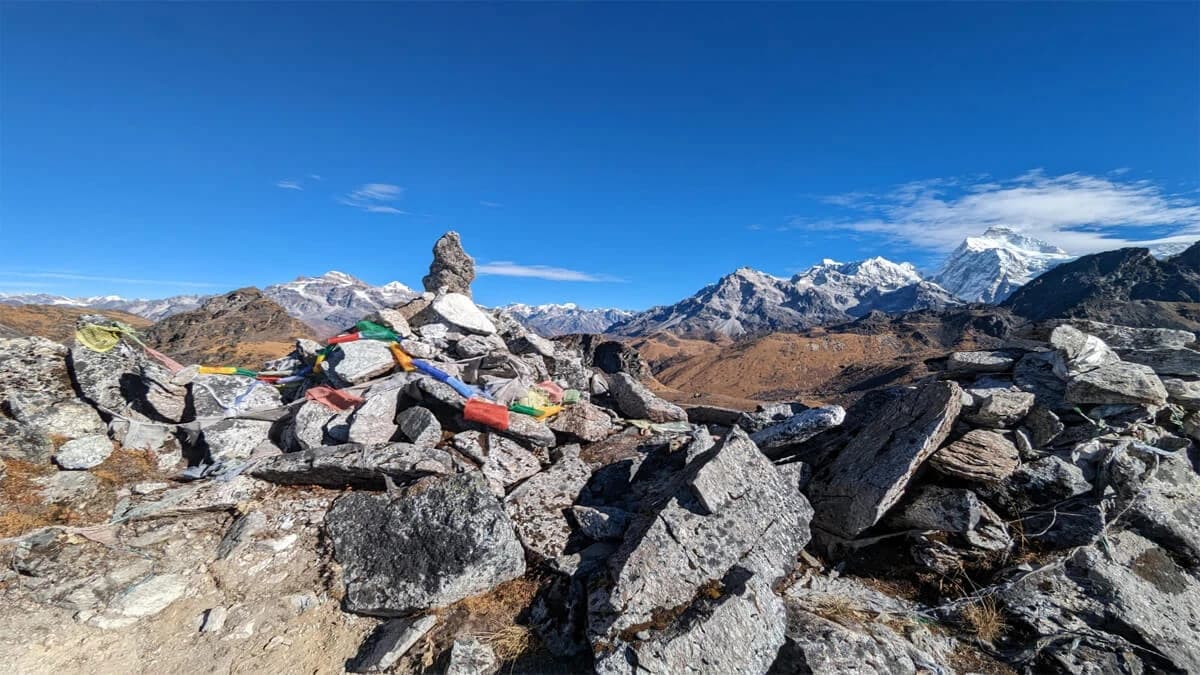
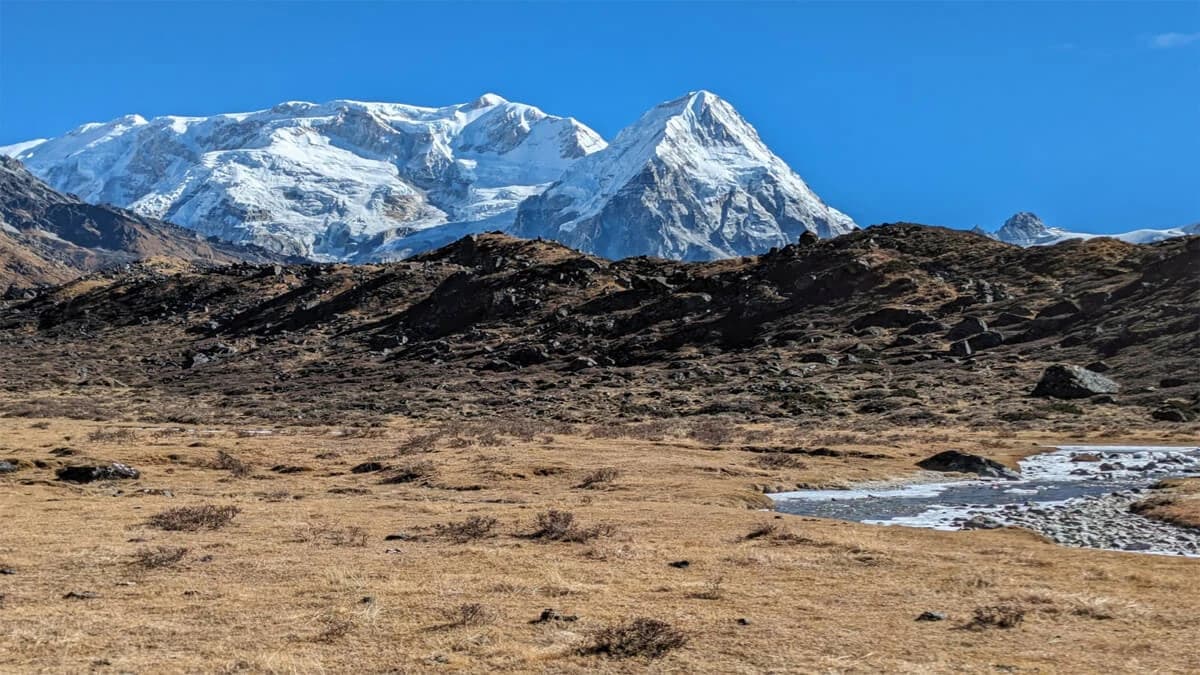
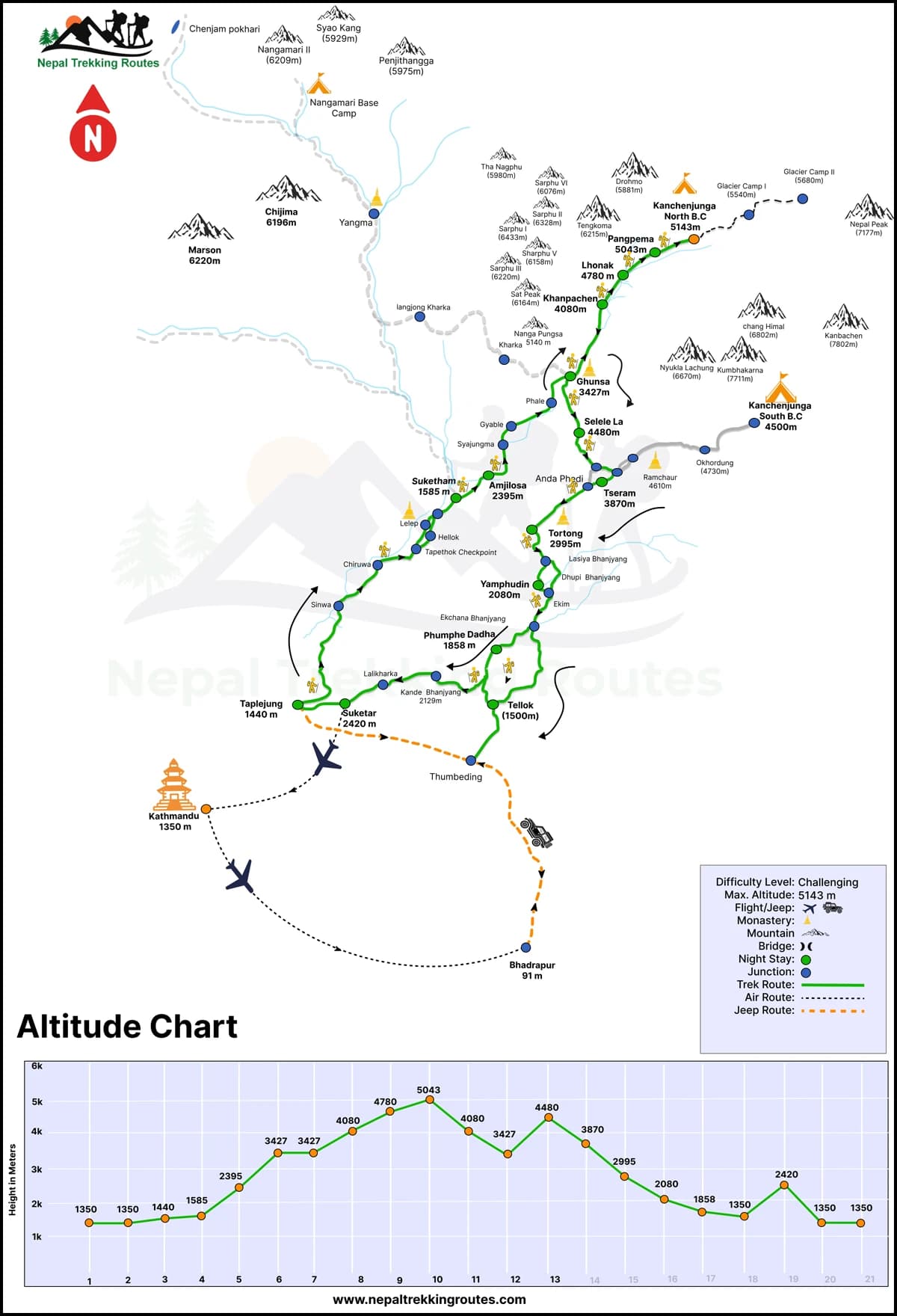
.webp&w=1200&q=75&dpl=dpl_4U3CaZUV3Y5iKdBNPJmVMATJy3AB)
